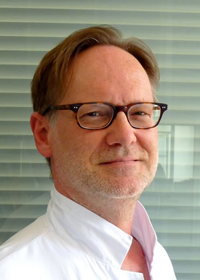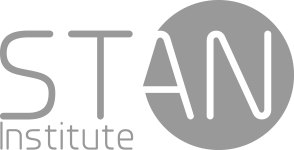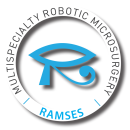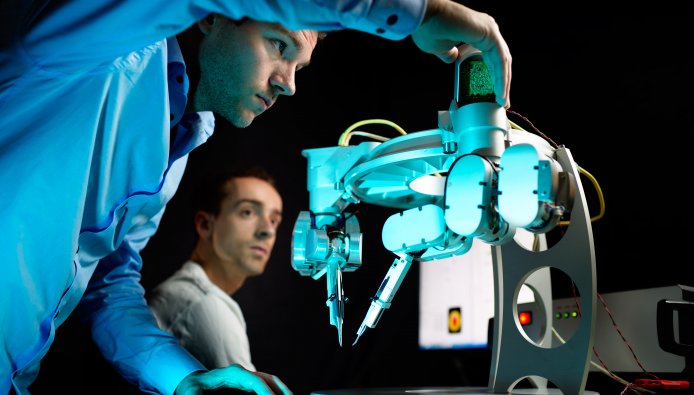
RAMSES 2015, une réussite totale
On 23-24 October the STAN Institute team was at the congress organised by RAMSES¹ in Geneva, Switzerland. It was the association’s fifth congress. Dr Georges-Antoine de Boccard opened the congress at the Mandarin Oriental hotel. The greatest benefit of the association, apart from the technical side, is the opportunity for contact with many surgical disciplines.

This year, specialists in ENT, gynaecology, urology, plastic surgery, ophthalmology and even neurology attended the congress. There were very useful exchanges about the application and use of the da Vinci surgical robot. Each delegate’s experience contributed to the sum of technical know-how.Presentations were put forward and discussed by Dr Jesse Selber from Houston and Professor Philippe Liverneaux from Strasbourg University Hospital. The speakers all addressed the question of training and the means at their disposal. Today there’s only one training course for robotic microsurgery, a situation which can be improved, according to its creator Professor Philippe Liverneaux. That’s why he decided to join Professor Jacques Hubert of Nancy University Hospital and the STAN Institute team to provide the perfect training course. Surgeons who don’t have the necessary skill level in robotic surgery should do the IUD (inter-university diploma) course in robotic surgery. Thereafter, they can do the joint STAN Institute / IRCAD training course.
Training is a key issue
Other speakers highlighted the quality of pre-existing training courses in microsurgery (other than robotic). Yelena Akelina, director of the Microsurgery Training and Research Laboratory at the University of Columbia, described the resources and curricula of their training program. Dr Sijo Parekattil, co-director of the PUR Clinic in Florida, emphasized the necessity for keeping things simple when using the da Vinci robot, and looked at the issue of standardisation within the surgical community. Dr Jesse Selber is already working on a performance assessment protocol for microsurgery practice. It’s a kind of FRS², he calls it SARMS³ (structured assessment of robotic microsurgical skills). Great strides are being made on the other side of the Atlantic, and they’re going in the right direction.
The future of robotic microsurgery
With a technical perspective, Dr Tom van Mulken and engineer Raimondo Cau from the Netherlands presented developments and improvements in their future microsurgery robot, under development by MicroSure. It has made an excellent start. This surgical robot is expected to reach the market in 2018. Intuitive Surgical also presented interesting new tools for the da Vinci Xi; and Frédéric Nahon from Titan Medical presented an alternative to current robotic surgery.
The next RAMSES congress will take place in Istanbul on November 2016.
¹ Robotic Assisted MicroSurgical & Endoscopic Society
² Fundamentals of Robotic Surgery
³ Structured Assessment of Robotic Microsurgery Skills



